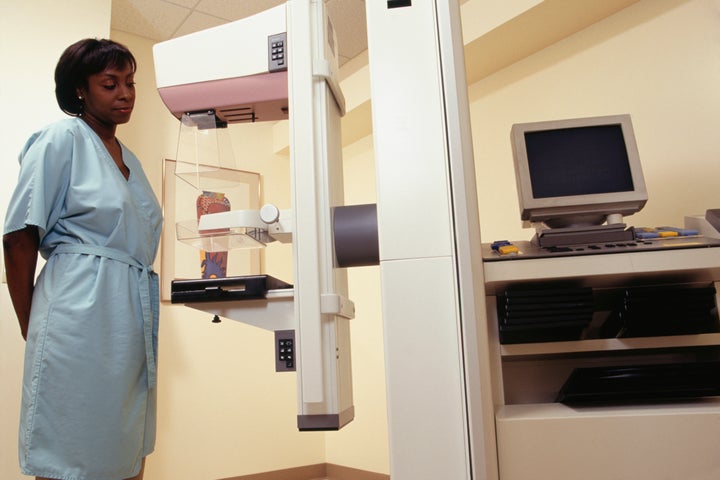New Cases
Breast cancer is the most commonly diagnosed cancer among black women, and an estimated 30,700 new cases are expected to be diagnosed in 2016. Similar to the pattern among white women, breast cancer incidence rates among black women increased rapidly during much of the 1980s , largely due to increased detection by mammography screening. However, while rates thereafter generally stabilized in white women they continued to increase, albeit more slowly, in black women (0.5% per year from 1986 to 2012).4 As a result, incidence rates in black and white women converged in 2012. The continued increase in incidence rates in black women may in part reflect the rising prevalence of obesity in this group (Figure 9).
During 2008-2012, the overall breast cancer incidence rate in black women was 124.3 cases per 100,000 women, 3% lower than in white women (128.1). However, rates were higher in black than in white women in seven US states (Alabama, Kentucky, Louisiana, Mississippi, Missouri, Oklahoma, and Tennessee), and were not significantly different in 24 states.26 Breast cancer incidence rates are also higher among blacks than whites for women under age 45. The median age of diagnosis is 58 for black women, compared to 62 for white women.
All women can help reduce their risk of breast cancer by avoiding weight gain and obesity (for postmenopausal breast cancer), engaging in regular physical activity, and minimizing alcohol intake. Women should consider the increased risk of breast can- cer associated with combined estrogen and progestin hormone therapy use when evaluating treatment options for menopausal symptoms. In addition, recent research indicates that long-term, heavy smoking may also increase breast cancer risk, particularly among women who start smoking before their first pregnancy. More information about breast cancer is available in the American Cancer Society publication Breast Cancer Facts & Figures, available online at www.cancer.org.
*ACS African American 2016-2018 Cancer Facts
Deaths
Breast cancer is the second most common cause of cancer death among black women, surpassed only by lung cancer. An estimated 6,310 deaths from breast cancer are expected to occur among black women in 2016. Breast cancer death rates among black women increased from 1975 to 1991, but declined thereafter as a result of improvements in both early detection and treatment. Prior to the mid-1980s, breast cancer death rates for white and black women were similar. However, a larger increase in black women from the mid-1970s to the early 1990s, followed by a slower decline, has resulted in a widening disparity. Since 1990, breast cancer death rates dropped 23% in black women compared to a 37% drop in white women. As a result, breast cancer death rates in the most recent time period (2008-2012) are 42% higher in black women compared to white women, despite similar incidence rates. Higher death rates among black women likely reflects a combination of factors, including differences in stage at diagnosis, obesity and comorbidities, and tumor characteristics, as well as access, adherence, and response to high-quality cancer treatment.
*ACS African American 2016-2018 Cancer Facts
http://www.sistersnetworkinc.org/breastcancerfacts.html
Avon will donate 20% of the net profits from breast cancer fundraising products up to $1 million to the Avon Foundation for Women to support Avon Beast Cancer Crusade programs across the U.S.
 Introducing “Shop for the Greater Goods” – must-have items that help support the most important women’s causes. Shop Pink Hope products like this Pink Hope Iconic Lipstick
Introducing “Shop for the Greater Goods” – must-have items that help support the most important women’s causes. Shop Pink Hope products like this Pink Hope Iconic Lipstick CLICK HERE TO SHOP FOR THE GREATER GOODS

.png)








Comments
Post a Comment